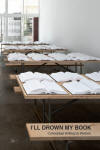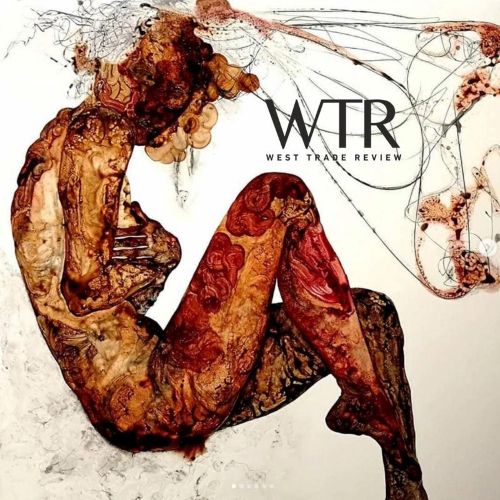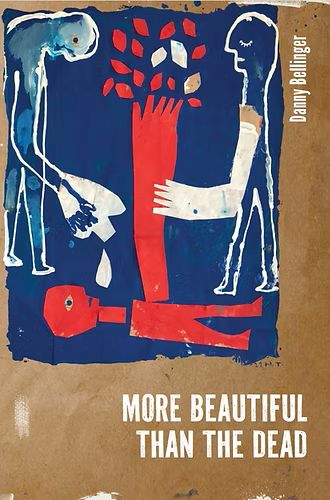As an art school grad, I’ve spent my fair share of time staring at objects in galleries wondering about the artist’s intent. While I of course had my own experience with each piece of art, it was worthwhile to know that the pile of bones at the MCA was not a general memento mori but a statement about U. S. policies regarding “extraordinary rendition.” Frequently, I’ve thought that the idea behind the art was interesting, but the execution was unsuccessful, or even unnecessary. Rosemarie Waldrop, in the statement following her contribution to Les Figues Press’s I’ll Drown My Book: Conceptual Writing by Women, makes the claim that this frame is an inaccurate description of the work of conceptual writers. Unlike visual or time artists who leave their sensuous medium for the intellectual exercise of writing, Waldrop’s conceptual writing focuses more on the sensual than writing from other movements. She focuses on the “shape” and sound of words, the experience of the word itself rather than its use as signifier. Further, unlike artists in other meanings, there is no “optional execution”; one either erases words from a canonical text, or one does not.
As an art school grad, I’ve spent my fair share of time staring at objects in galleries wondering about the artist’s intent. While I of course had my own experience with each piece of art, it was worthwhile to know that the pile of bones at the MCA was not a general memento mori but a statement about U. S. policies regarding “extraordinary rendition.” Frequently, I’ve thought that the idea behind the art was interesting, but the execution was unsuccessful, or even unnecessary. Rosemarie Waldrop, in the statement following her contribution to Les Figues Press’s I’ll Drown My Book: Conceptual Writing by Women, makes the claim that this frame is an inaccurate description of the work of conceptual writers. Unlike visual or time artists who leave their sensuous medium for the intellectual exercise of writing, Waldrop’s conceptual writing focuses more on the sensual than writing from other movements. She focuses on the “shape” and sound of words, the experience of the word itself rather than its use as signifier. Further, unlike artists in other meanings, there is no “optional execution”; one either erases words from a canonical text, or one does not.
Despite this problem with the label, established and emerging writers have contributed mostly previously published work to be collected under its rubric. While methods vary, there are concerns that tie the collection together. Editor Laynie Browne’s introduction explains: “Collective thinking is primary, reader participation is requisite, the ‘I’ when present is often an assemblage of voices and process is often primary and integrative.” Other writers echo the idea that writing is a recursive exchange with the reader. In “Phallus Philtre,” Lee Anne Brown says, “We who are language sensitive / with a deep capacity for melancholy / know its [sic] good shit if we want to write during it.” This relationship is particularly attractive as a subversion of what editor Caroline Bergvall calls the “status quo that must silence or symptomatize the female, minoritarian or differential writer.” Denied language, these writers appropriate the language of others for their own devices.
Readers need not sneak behind the curtain to understand these methodologies; they are invited. The underpinnings are laid bare and made visible. “These are just studies too,” Jen Bervin announces. The works contained in this volume are places for writers to follow their obsessions to the end, but not necessarily to completion. The result is what Yedda Morrison calls “muddy tracks in an English garden.” Freed from concerns of finished form, contributors engage in what Bergvall describes as “games as source of perception and knowledge. . . . Bliss is the gaping shirt, writes Barthes.” Like Morrison’s text, which erases everything but scenery in selections from Heart of Darkness and the excerpts from Harryette Mullen’s S*PERM**K*T that pick at the ads and packaging in our daily lives, texts engage with the unknown and investigative. This unmapped territory is the natural space of poetry; in “Emergence of a Fiction,” Renee Gladman writes, “Moving from the constellation of the single progressing line of the sentence [creates a] semantic delay [that] represents the slippage between what you are trying to say . . . and what you actually do say.”
In perhaps the most scatological afterward that I’ve ever read, Vanessa Place reminds us of the primacy of context and that the reader is the ultimate arbiter of the “the pure textual materiality.” Why a collection of conceptual writing by women? The act of collection is creation of meaning.





